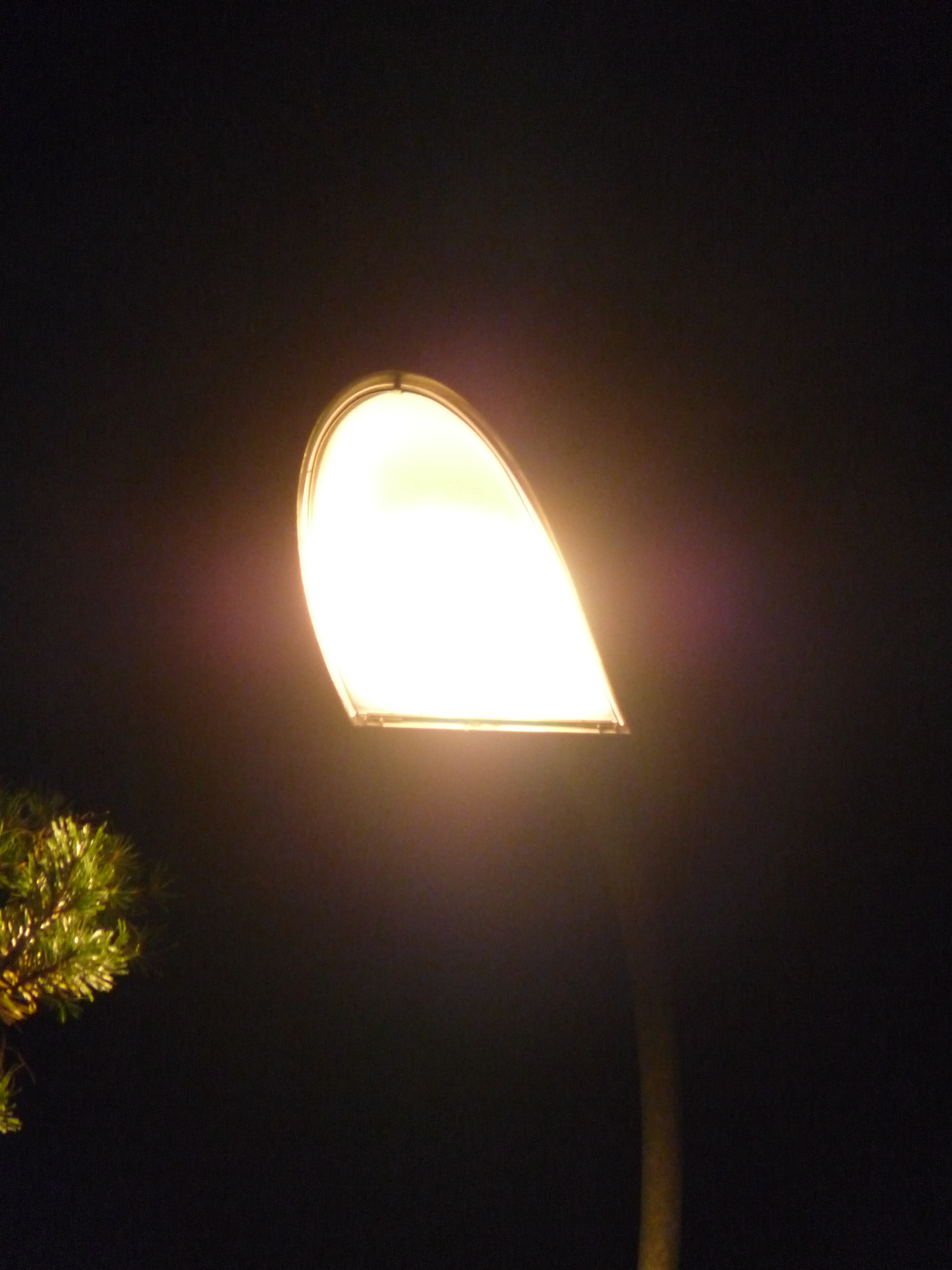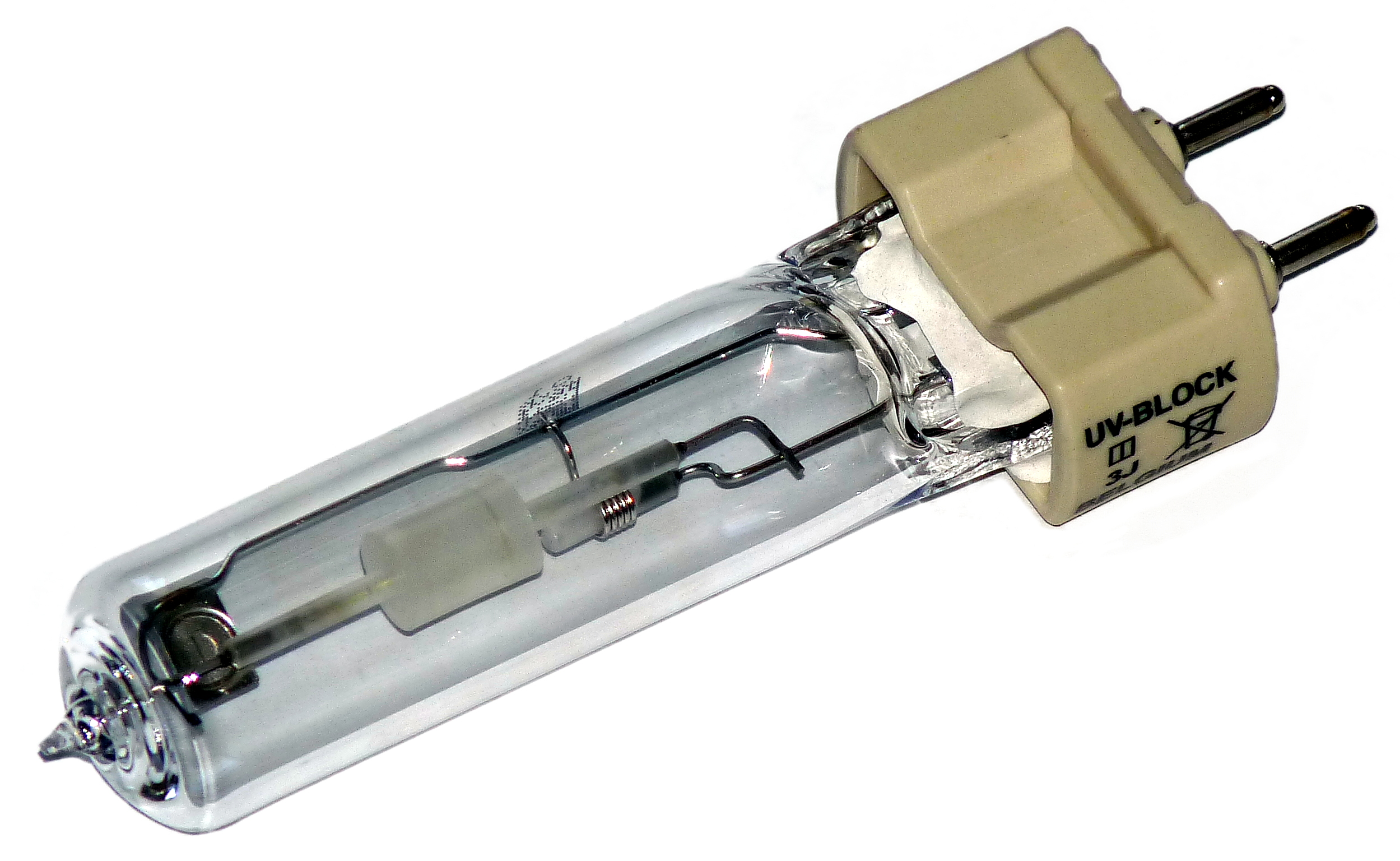Ceramic Metal-halide Lamp on:
[Wikipedia]
[Google]
[Amazon]

 A ceramic metal-halide lamp (CMH), also generically known as a ceramic discharge metal-halide (CDM) lamp, is a type of metal-halide lamp that is 10–20% more efficient than the traditional quartz metal halide and produces a superior
A ceramic metal-halide lamp (CMH), also generically known as a ceramic discharge metal-halide (CDM) lamp, is a type of metal-halide lamp that is 10–20% more efficient than the traditional quartz metal halide and produces a superior
Ceramic Metal Halide Lamps
{{Artificial light sources Gas discharge lamps
color rendition
A color rendering index (CRI) is a quantitative measure of the ability of a light source to reveal the colors of various objects faithfully in comparison with a natural or standard light source.
''Color rendering'', as defined by the Internat ...
(80-96 CRI).
Applications for these lamps include shop lighting
Lighting or illumination is the deliberate use of light to achieve practical or aesthetic effects. Lighting includes the use of both artificial light sources like lamps and light fixtures, as well as natural illumination by capturing daylight. ...
, street light
A street light, light pole, lamp pole, lamppost, streetlamp, light standard, or lamp standard is a raised source of light on the edge of a road or path. Similar lights may be found on a railway platform. When urban electric power distribution b ...
ing, architectural lighting and agricultural lighting including grow light
A grow light is an electric light that can help plants grow. Grow lights either attempt to provide a light spectrum similar to that of the sun, or to provide a spectrum that is more tailored to the needs of the plants being cultivated (typically a ...
s. A CMH light was first exhibited by the Thorn Lighting Group in 1981 at the Hannover World Light Fair, and the first commercial ceramic metal halide lamps were distributed by Philips
Koninklijke Philips N.V. (), simply branded Philips, is a Dutch multinational health technology company that was founded in Eindhoven in 1891. Since 1997, its world headquarters have been situated in Amsterdam, though the Benelux headquarter ...
in 1994.
The term "Light Emitting Ceramic" (LEC) is sometimes generically used to describe ceramic metal-halide lamps in grow lights in general, though that term is actually the registered trademark of a specific brand of ceramic metal halide light.
Operation
The ceramic metal halide is a variation of the metal-halide lamp which is itself a variation of the old (high-pressure)mercury-vapor lamp
A mercury-vapor lamp is a gas-discharge lamp that uses an electric arc through vaporized mercury to produce light. The arc discharge is generally confined to a small fused quartz arc tube mounted within a larger soda lime or borosilicate gla ...
. A CMH uses a ceramic arc tube instead of the fused quartz arc tube of a traditional metal halide lamp. Ceramic arc tubes allow higher arc tube temperatures, which some manufacturers claim results in better efficacy, color rendering, and color stability.
The discharge is contained in a ceramic tube, usually made of sintered
Sintering or frittage is the process of compacting and forming a solid mass of material by pressure or heat without melting it to the point of liquefaction. Sintering happens as part of a manufacturing process used with metals, ceramics, pla ...
alumina
Aluminium oxide (or aluminium(III) oxide) is a chemical compound of aluminium and oxygen with the chemical formula . It is the most commonly occurring of several aluminium oxides, and specifically identified as aluminium oxide. It is commonly ...
, similar to that used in the high pressure sodium lamp. During operation, the temperature of this ceramic tube can exceed 1200 kelvin
The kelvin (symbol: K) is the base unit for temperature in the International System of Units (SI). The Kelvin scale is an absolute temperature scale that starts at the lowest possible temperature (absolute zero), taken to be 0 K. By de ...
s. The ceramic tube is filled with mercury, argon
Argon is a chemical element; it has symbol Ar and atomic number 18. It is in group 18 of the periodic table and is a noble gas. Argon is the third most abundant gas in Earth's atmosphere, at 0.934% (9340 ppmv). It is more than twice as abu ...
and metal-halide salt
In common usage, salt is a mineral composed primarily of sodium chloride (NaCl). When used in food, especially in granulated form, it is more formally called table salt. In the form of a natural crystalline mineral, salt is also known as r ...
s (for example, sodium iodide). Because of the high wall temperature, the metal halide salts are partly vaporized. Inside the hot plasma, these salts are dissociated into metallic atoms and iodine.
The metallic atoms are the main source of light in these lamps, creating a white light with a CRI (color rendering index) of up to 96. The exact correlated color temperature
Correlated color temperature (CCT, Tcp) refers to the "temperature of a Planckian radiator whose perceived color most closely resembles that of a given stimulus at the same brightness and under specified viewing conditions". The SI unit is the ...
and CRI depend on the specific mixture of metal halide salts. There are also warm-white ceramic metal halide lamps, with somewhat lower CRI (78-82) which still give a more clear and natural-looking light than the old mercury-vapour and sodium-vapour lamps when used as street lights, besides being more economical to use.
The ceramic tube is an advantage in comparison to earlier fused quartz
Fused quartz, fused silica or quartz glass is a glass consisting of almost pure silica (silicon dioxide, SiO2) in amorphous (non-crystalline) form. This differs from all other commercial glasses, such as soda-lime glass, lead glass, or borosi ...
. During operation, at high temperature and radiant flux, metal ions tend to penetrate the silica, depleting the inside of the tube. Alumina is not prone to this effect.
CMH lights have a long life of up to 24,000 hours.
Efficacy
Ceramic metal halide lamps use one fifth of the power of comparabletungsten
Tungsten (also called wolfram) is a chemical element; it has symbol W and atomic number 74. It is a metal found naturally on Earth almost exclusively in compounds with other elements. It was identified as a distinct element in 1781 and first ...
incandescent light bulb
An incandescent light bulb, also known as an incandescent lamp or incandescent light globe, is an electric light that produces illumination by Joule heating a #Filament, filament until it incandescence, glows. The filament is enclosed in a ...
s for the same light output (80–117 lm/W) and retain color stability better than most other gas discharge lamps. Like other high-intensity discharge lamps, they require a correctly rated electrical ballast
An electrical ballast is a device placed in series with a load to limit the amount of electric current, current in an electrical network, electrical circuit.
A familiar and widely used example is the inductive ballast used in fluorescent lamp ...
in order to operate.
See also
*List of light sources
This is a list of sources of light, the visible part of the electromagnetic spectrum. Light sources produce photons from another energy source, such as heat, chemical reactions, or conversion of mass or a different frequency of electromagnetic ener ...
References
External links
Ceramic Metal Halide Lamps
{{Artificial light sources Gas discharge lamps